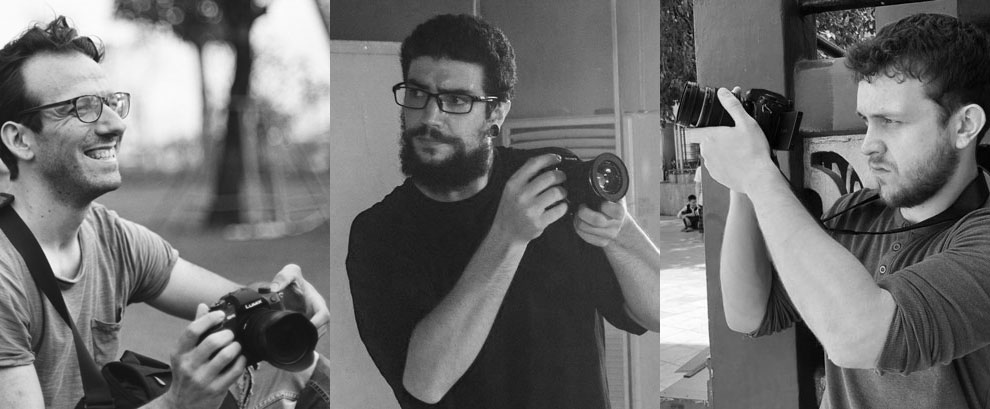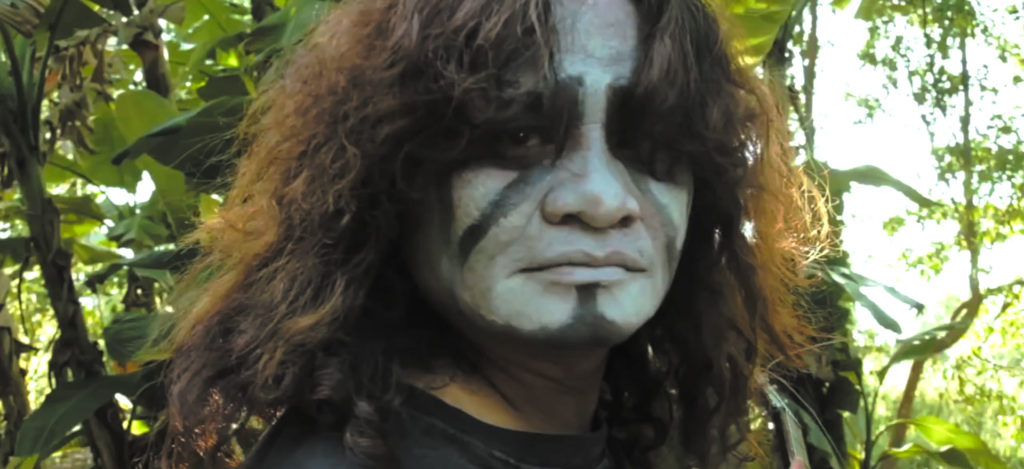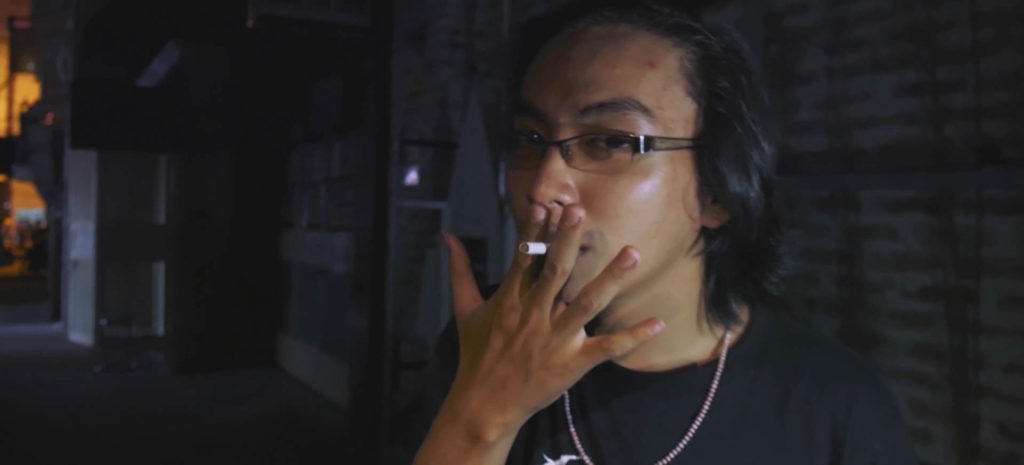
If you want to rock down while you lockdown, we recommend a heavy dose of Saigon Metalhood. A documentary about the Vietnamese heavy metal scene since the 1970s, it uncovers a musical movement little known outside the country and one that receives little love from within.
Divided into three sections, Saigon Metalhood takes a past, present and future view of the country’s metal scene and key players.
We meet Trung Thanh Sago, who has flown the metal flag since the 1970s when the country was at war, and still fronts his band Sagometal. Trung Loki is another pioneer, again pushing a music genre largely unloved by a population who favour the synth stylings of K-pop. The final section focusses on Legacy, a start-up that promoted and represented Vietnamese metal and hosted gigs showcasing Western bands.
With a clear interest in their subject, the filmmakers embed themselves with the main players. They are also clear-eyed about the niche-within-a-niche status of this music within Vietnam, and the small, at times bemused audiences who attend shows.
What emerges is a bittersweet celebration of the creative spirit. Happy endings are not guaranteed and the documentary features dark moments. But, it never mocks the musicians’ unwavering commitment and avoids Spinal Tap-like comedy set-pieces. Instead, we are witness to such episodes as a genuinely tense segment when Legacy’s Vu Nguyen must bargain with the power company to turn the power back on, so visiting German band Defeated Sanity can perform their booking…
We spoke with the filmmakers, Sean Lambe, Will Snyder and Mateu Perpinya about what drew them to the story, thoughts on the Vietnamese metal scene and their experiences shooting in South East Asia.

CLICK HERE TO WATCH SAIGON METALHOOD NOW
Use the code “electricshadows” for 50% off purchasing the film
Could you tell us a little about yourselves and what you do?
Sean: We are Irregular Film, an independent film studio founded in Saigon, Vietnam. The three of us involved in this documentary were myself, Will Snyder and Mateu Perpinya. We make documentaries about subjects that we find interesting, and take full advantage of the freedom that being a completely independent company grants us.
How did you first hear about the Vietnamese metal scene and what made you want to tell the story
Will: We had long been curious about alternative music scenes in Vietnam and I happened to start dating a Vietnamese lady who ran in the same circles as Trung Thanh Sago.
We had just finished our first short documentary, Faces You Forget, so it was the perfect opportunity to dive into a new doc topic. Little did we know it would be more than three and a half years until we released it!
Sean: Me and Matt were teenage metalheads so the idea of making a doc about a genre that meant so much to us with a country we all consider a second home was enticing. The “East meets West” angle, showing the Vietnamese interpretation of a music genre that is niche even in its heartlands interested us, and we felt would be compelling for music fans around the world too.
Matt: I have always been into music videos, so I tried to make them happen in the metal scene. But, it turned out to be a lot harder than I expected, so I drifted into the hip-hop scene and made multiple music videos there.
I met William and Sean as they had the metal documentary on-going and joined them on the project. When William showed me some of the footage he already shot, I happened to know a lot of those people. I also found a lot of the footage super funny, so that made it easier to jump in and start editing it!

The film is broken into three chapters looking at three figures from the past, present and possible future of the country’s metal scene. Was it obvious early on these three figures were most interesting in telling the story?
Will: Trung Thanh Sago was clear from the start – we actually first imagined the project as exclusively about him – but after spending more time around the scene we became more acquainted with some of the other people around such as Trung Loki and the Legacy team.
Sean: When we realised we would broaden our scope, the intention was to capture the entire scene. The net we cast during the first six months of production was probably too large in retrospect, but it allowed us to make a much more informed decision when we chose the main players whose stories most intertwined with the events that shaped the scene.
Matt: As we chopped up the footage and started building the storylines in the documentary, it became clear how the story should be told. The initial vision for the documentary is rather different to what it is now, although at its core, it is still the same.
The subjects in your film are dedicated to spreading the word, but it seems as if wide public interest is not there. Did that surprise you, given the violence of Vietnam’s history in the 20th century seems suited to expression through thrash metal?
Sean: It did surprise me when I first arrived! Like you say, Vietnam seems primed to be a real home for metal due to its bloody recent past. Metal is a cathartic genre when dealing with frustration and anger.
I feel had the government not stunted the growth of alternative scenes by prohibiting western music in the immediate post-war years, we would see a metal scene at least on the same level as Thailand or Indonesia.
Will: After spending years in Vietnam already, we knew enough about the culture to not be fully surprised when starting the project. But we were curious to know more, because Vietnam is a very young country in terms of demographics and has a burgeoning counterculture scene. Unfortunately hip-hop and hardcore seem more popular these days amongst the rebellious youth.
From the documentary it seems as if Vietnamese metal is powered by professionals in their spare time or enthusiastic hobbyists. Presumably, the Vietnamese music industry does not see any financial potential in it?
Will: It seems not! Pop is very dominant, whether Vietnamese, Korean or American. But a lot of the metal musicians here seem to take pride in not selling/marketing their work.
I understand their point of view, but I can’t help but wonder what unwritten and unrecorded music we may have missed out on because there’s never been a way to easily purchase music or merch to support most of these bands.

What were obstacles you encountered when making the film?
Will: Well, Sean and I had full-time work throughout production, though we’ve since been able to focus more completely on filmmaking. That made the process much longer than it needed to be, and of course we did it completely independently so we didn’t have any budget to lean on.
Beyond that, there were a lot of musicians and bands that we wanted to include but it just never materialized… part of it may be mistrust of outsiders or reticence to appear on camera, which is understandable. We’re very grateful for all the people who did generously agree to lend their time and support to the project.
Sean: One of the main figures we focused on was, and is still, struggling with major drug demons. He frequently disappears for months at a time before popping up again with little to no warning. He’s a lovely guy who is great fun to be around, but he has a rainforest’s worth of monkeys on his back. Looking back, we were really lucky to get the footage we did.
Matt: Documentaries are the most fun and the most not-fun type of film to edit. Fun because it is straight up story, there’s not as much technical work involved as in narrative films. But, oh wow, they do take a long time to edit. We had days where we literally made 5 cuts and spent hours discussing the best way to put them together.
What advice would you give to filmmakers looking to shoot in South East Asia on a limited budget?
Will: Go do it! Find a story that matters to you! Don’t get too caught up in flashy cinematography or gear purchases!
Sean: South-East Asia gives a unique opportunity to people from English speaking countries in that it allows you to earn a decent salary while working part-time hours doing ESL teaching.
If you can sidestep the drug and party traps that ensnare many fresh expats, you have a lot of free time to follow creative passions whatever they may be. If we had stayed in the west doing a standard 9-5 job, it would have been incredibly difficult to dedicate the amount of time we spent to this project, which has led to us being able to raise our profile and focus full-time on film.
So my advice would be to be mindful of the temptations and go for it!
Matt: Go! What are you waiting for, who or what is stopping you? Your phone shoots better video than the first cameras I used. No excuse, go make the films you want to watch.
You have gone for an interesting distribution route, with Saigon Metalhood available to rent and buy on Vimeo. Did you explore the more traditional route of TV or streaming platforms such as Amazon and Netflix?
Will: We received a few offers from distribution companies that specialize in working with independent filmmakers. But, nothing made us feel confident that we were putting our film in the hands of people who cared about it as much as we did.
Vimeo has the best revenue share for indie filmmakers bar none, and we’ve always had a DIY mindset from the start of our documentary career with Faces You Forget.
As for other platforms… we are planning to roll it out in more places in the coming months, though I can’t give specifics yet. Ultimately, we want to share our film and story with as many people as we can.

The movie ends on a poignant note, being dedicated to the memory of Vu Nguyen one of Legacy’s founders and bassist in Hysterical Buffalo. Could you tell us what happened there?
Will: Vu tragically took his own life in 2019. We were shocked by it, but sadly it does seem that there is an undercurrent of deep sadness and loss in many of the metalheads involved in the film. We hope that our film preserved a bit of him at his best.
Sean: We were about a week away from the final cut of the film when we heard the news. I remember feeling sick and it took my brain a long time to process it.
We felt it would be tasteless and wrong to make his suicide part of the story, as production had finished some time ago and him taking his life had nothing to do with the metal scene. But we wanted to honour him with the film. He was a really great and funny dude and it was a tragedy in so many ways.
What are you working on next?
Will: We’ve begun production on a new documentary about Lethwei, which is a Burmese bareknuckle fighting style with ancient roots. We were forced to return to our home countries from Myanmar in March due to the virus, but as soon as we’re able we’re going to get back on it.
Sean: Irregular Film keeps on growing and we’ve recently expanded our ranks with more creative young people who want to tell interesting stories. We’ll continue to look for subjects that are unlikely to be documented by mainstream studios and we also won’t rule out some Irregular narrative films in the near future!
Matt: Currently entangled in a sci-fi short film. Unfortunately, production is halted because of the virus just like half of the world. Can’t wait to get back on it.
Thanks to Sean Lambe, Mateu Perpinya & Will Snyder for making time to speak with us
Click here for more information on Irregular Film
Rob Daniel
Twitter: rob_a_Daniel
iTunes Podcast: The Movie Robcast
